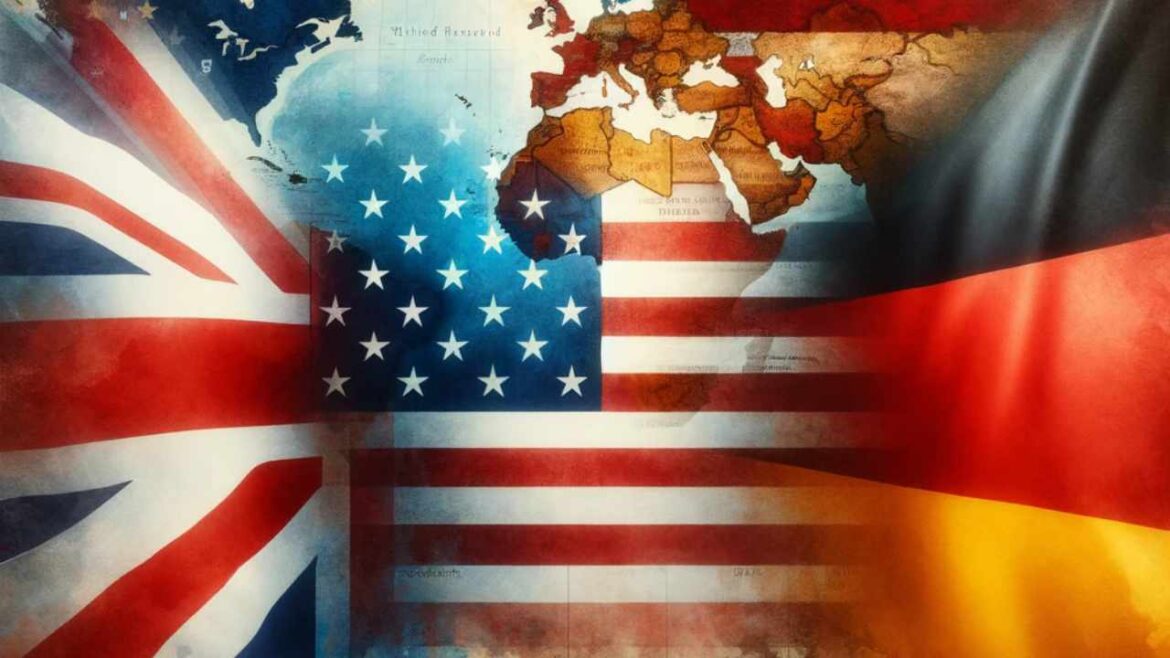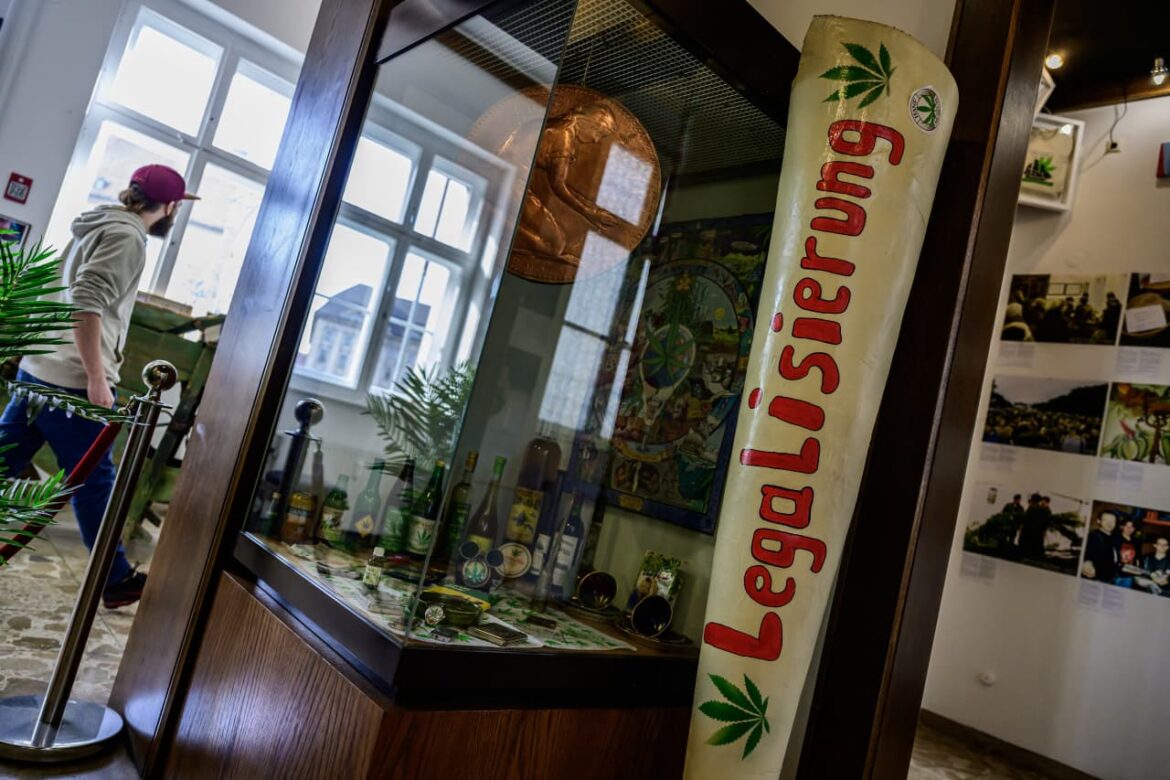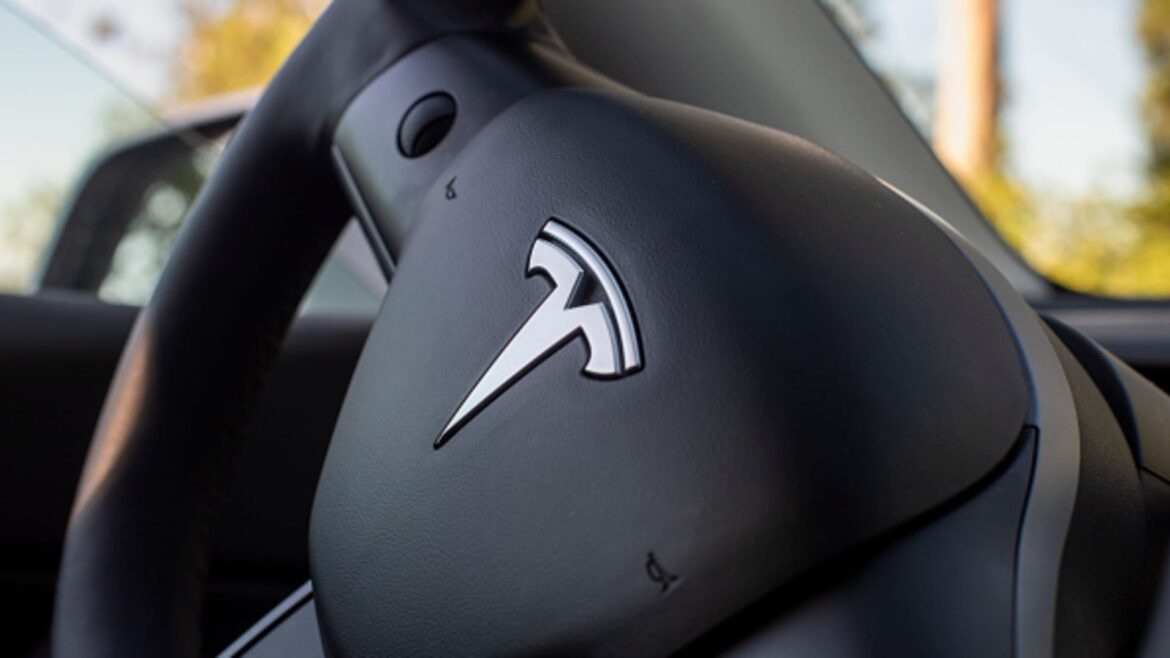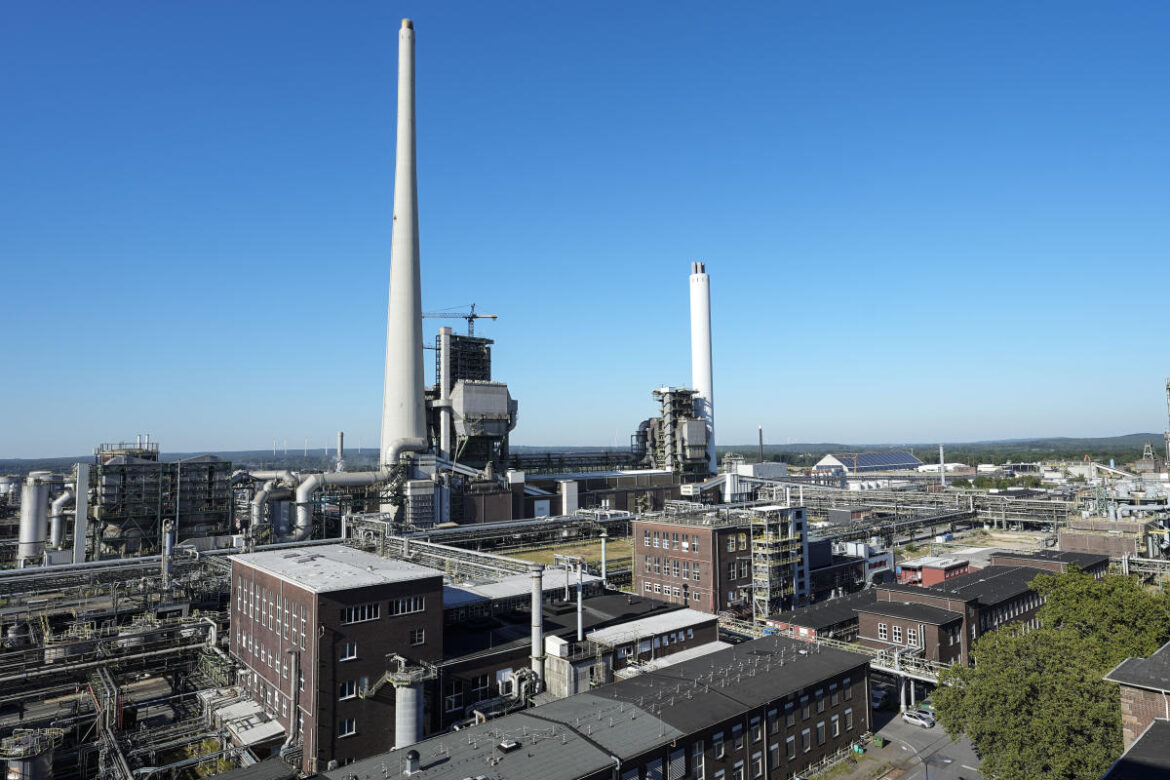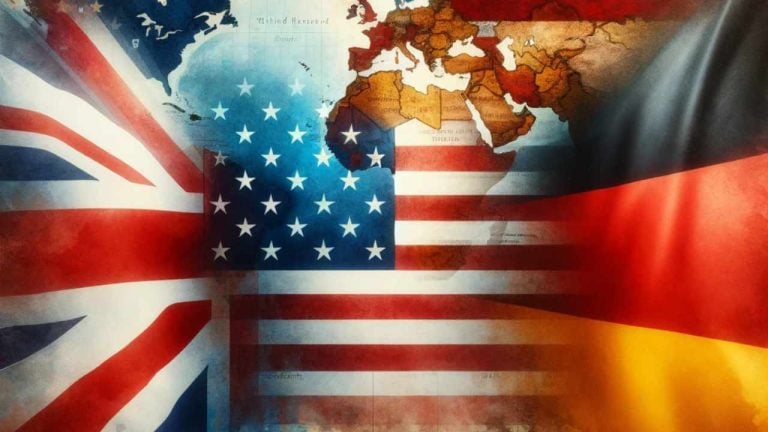 The United States, United Kingdom, and Germany rank among the top countries holding cryptocurrencies at the government level, according to data from Arkham Intelligence. The crypto analytic firm’s onchain analysis shows that the U.S. government holds 212,847 bitcoins while El Salvador has been purchasing one bitcoin daily as announced by its president. Top Government Holders […]
The United States, United Kingdom, and Germany rank among the top countries holding cryptocurrencies at the government level, according to data from Arkham Intelligence. The crypto analytic firm’s onchain analysis shows that the U.S. government holds 212,847 bitcoins while El Salvador has been purchasing one bitcoin daily as announced by its president. Top Government Holders […]
Source link
Germany
With Germany in recession and Detroit reeling over ultra-cheap Chinese EVs, Beijing vows to crack down on ‘blind’ construction of new projects
China is making automakers around the world nervous. Its domestic carmakers—helped by generous state subsidies—are churning out alarmingly inexpensive electric vehicles at a relentless pace, saturating their home market and threatening EV manufacturers overseas.
But they might be getting carried away, a high-ranking Chinese official suggested on Friday.
Xin Guobin, vice-minister of industry and information technology, said that Beijing would take “forceful measures” to address what he called “blind” construction of new EV projects—i.e., not justified by demand—by some Chinese carmakers and local authorities, as reported by the Financial Times.
His comments come amid pressure from Europe in particular over a flood of low-priced Chinese EVs hitting its markets.
“Their price is kept artificially low by huge state subsidies. This is distorting our market,” European Commission President Ursula von der Leyen said in September. “And as we do not accept this distortion from the inside in our market, we do not accept this from the outside.”
To be sure, it’s more the threat posed by Chinese EVs in the long run than the current reality that has EU officials concerned. In Germany, the center of EU automaking, Chinese EVs still have just a small sliver of market share. But it’s growing fast, and that has many in Europe’s automotive powerhouse worried amid fresh economic woes, even as German carmakers—who do brisk business in China—have warned against tariffs on Chinese EVs for fear of retaliation by Beijing.
EU probes Chinese subsidies
In the weeks ahead, EU investigators will visit Chinese EV makers BYD, Geely, and SAIC as part of a probe into whether they have an unfair advantage thanks to government subsidies. Their visits—part of an EU probe announced in September and set to run for 13 months—will help determine whether the EU imposes higher tariffs to protect European carmakers.
Of course, more than subsidies are at play. “The Chinese car companies are extremely competitive,” Tesla CEO Elon Musk said at the New York Times Dealbook conference last year. “China is super good at manufacturing, and the work ethic is incredible.”
Musk suggested that Chinese companies will emerge as dominant players in the global automotive industry—a sharp departure from when he laughed about the quality of BYD cars in 2011.
Chinese EV makers also have supply-chain efficiencies that are tough to beat. BYD, for instance, keeps its costs low partly by owning the entire supply chain of its EV batteries, significant since a battery accounts for roughly 40% of an electric vehicle’s price. Backed by Warren Buffett’s Berkshire Hathaway, the Chinese carmaker recently overtook Tesla in global sales of electric vehicles.
Whereas Chinese EV makers face 27.5% tariffs in the U.S., in the EU that’s just 10%. That’s encouraged them to target Europe as their home market gets increasingly crowded, although they’re also expanding quickly elsewhere, including in Southeast Asia and Latin America.
Last year, an Allianz Trade report stated that China’s EV makers pose a significant threat to European carmakers, particularly the “automotive-dependent economies of Germany, Slovakia and Czech Republic.” It called for higher tariffs on Chinese EVs, estimating that by 2030 they could cost Europe’s carmakers 7 billion euros per year in lost profits.
In the EU, Chinese-made EVs typically sell for 20% less than those made in the bloc, and their share of the EV market, which has grown to 8%, could reach 15% by 2025, according to Reuters.
The coming wave of Chinese EVs in America
Last year in China, BYD launched the Seagull, an EV with a cutthroat price of about $11,000. It quickly became one of the best-selling EVs in China. The Seagull and similar models from China could prove to be a disruptive force in overseas markets.
Chinese EVs might also become a common sight on American roads, eventually.
“No one can match BYD on price. Period,” Michael Dunne, CEO of Asia-focused car consultancy Dunne Insights, told the Financial Times earlier this month. “Boardrooms in America, Europe, Korea, and Japan are in a state of shock.”
Made-in-China EVs are sold in more than 100 countries, and the U.S. is the only market where they “have not yet really begun a big assault,” ZoZo Go CEO Michael Dunne, whose advisory firm specializes in the Chinese EV industry, told the Wall Street Journal.
Chinese EV makers are now searching for manufacturing sites in Mexico, which has a free trade agreement with the U.S. and Canada and could serve as a backdoor to those markets, a scenario American lawmakers have warned about.
Meanwhile, U.S. automakers have largely scaled back their EV ambitions—after making large initial investments—as demand has not been as great as anticipated. In a sign of the times, perhaps, all four of America’s largest carmakers passed on running Super Bowl ads this year—the first time that’s happened in 23 years.
But the threat from China has industry leaders on edge. Last summer, Ford executive chairman Bill Ford Jr. warned that American automakers are “not quite yet ready” to compete with Chinese rivals on EVs. “They developed very quickly, and they’ve developed them in large scale, and now they are exporting,” he told CNN. “They are not here, but they will come here we think at some point and we need to be ready.”
This story was originally featured on Fortune.com
Tesla Model Y, equipped with FSD system. Three front facing cameras under windshield near rear view mirror.
Mark Leong | The Washington Post | Getty Images
Tesla on late Tuesday trimmed prices for its Model Y cars across several countries in Europe, a week after announcing similar price cuts for its Model 3 and Model Y cars in China.
The company reduced prices on its cars sold into Germany, France, Norway and the Netherlands, according to data from the local version of the firm’s websites in each of those markets.
In Germany, the Model Y rear-wheel drive model now sells for 42,990 euros ($46,760.65), marking a roughly 4.2% discount to the car’s previous retail value. The Model Y Long Range now costs 49,990 euros, lower by 8.1% from the previous price, while the Model Y rear-wheel drive model retails for 42,990 euros, down by 4.2%.
In France, Tesla lowered prices on its Model Y cars by as much as 6.7%, while in the Netherlands, Tesla reduced prices for the Model Y by up to 7.7%. In Norway, the company slashed prices by between 5.6% and 7.1%.
Tesla shares were 1.6% lower in U.S. premarket trading.
The reductions come after Tesla announced price cuts for its Model 3 and Model Y cars in China. The company has reduced prices for its cars aggressively in China over the past year or so, undercutting local competitor BYD.
Tesla trimmed prices of the Model 3 by 6% compared to December last year, also taking prices for the Model Y down by 11%, according to data from JL Warren Capital.
Tesla’s German operations have been affected by disruptions in the Red Sea after the Iran-backed Houthis group launched attacks on ships traversing the key route, wreaking havoc on global trade and drawing international criticism.
As a result of the Mideast turmoil, Tesla said it would suspend most car production at its Berlin-Brandenburg plant last week, citing a lack of components due to changes in transport routes.
Competition in the electric vehicle market has been heating up over the past year, with Tesla facing off a slew of other automakers. BYD, a Chinese carmaker which is backed by legendary investor Warren Buffet, toppled Tesla as the world’s biggest EV maker in 2023.
Volkswagen usurped Tesla as the EV king in its Germany, outselling the U.S. automaker last year with a market share of 13.5%, compared to Tesla’s 12.1%, according to figures from German federal motor authority KBA.

Crypto custodial firm BitGo reportedly secured a cryptocurrency custody license from the German Federal Financial Supervisory Authority (BaFin), Financial Magnate reported Nov. 1.
The licensing represents a significant milestone for BitGo in Europe and highlights the important role BaFin plays in setting crypto regulation, according to Dejan Maljevic, the managing director of BitGo Europe.
“BaFin is recognized as one of the world’s key trendsetters in crypto regulation. It enables the progress that digital currencies entail while creating a secure regulatory framework,” Maljevic reportedly said.
Before this licensing, BitGo had been assisting its customers in safeguarding their cryptocurrency holdings under BaFin’s supervision through a transitional arrangement established in 2019.
Meanwhile, this development continues BitGo’s recent positive streak. In August, the firm secured $100 million in a funding round that pushed its valuation to $1.75 billion. At the time, CEO Mike Belshe emphasized the importance of being licensed and regulated, stating that “regulatory safety is just on everybody’s minds right now.”
BitGo secured a New York Trust license in March 2021, allowing it to operate as an independent and regulated qualified custodian under the New York State Banking Law.
Germany’s role in Europe crypto ecosystem
Germany is recognized as one of the most friendly crypto-regulatory environments in Europe.
A recent study by Chainalysis has positioned the nation as Europe’s second-largest cryptocurrency economy. Additionally, a 2022 CoinCub ranking claimed Germany was the world’s most crypto-friendly country, citing its regulatory clarity and strong legal frameworks.
For context, the country introduced regulations allowing companies to issue crypto shares. Besides that, the country’s regulatory authorities have also formulated several measures designed to protect people under jurisdictions.
This has resulted in major traditional financial institutions like Deutsche Bank AG applying for crypto-related licensing with the authorities.
However, crypto firms like Binance and WorldCoin have struggled within the region despite its pro-crypto tendencies.
Germany went from envy of the world to the worst-performing major developed economy. What happened?
ESSEN, Germany (AP) — For most of this century, Germany racked up one economic success after another, dominating global markets for high-end products like luxury cars and industrial machinery, selling so much to the rest of the world that half the economy ran on exports.
Jobs were plentiful, the government’s financial coffers grew as other European countries drowned in debt, and books were written about what other countries could learn from Germany.
No longer. Now, Germany is the world’s worst-performing major developed economy, with both the International Monetary Fund and European Union expecting it to shrink this year.
It follows Russia’s invasion of Ukraine and the loss of Moscow’s cheap natural gas — an unprecedented shock to Germany’s energy-intensive industries, long the manufacturing powerhouse of Europe.
The sudden underperformance by Europe’s largest economy has set off a wave of criticism, handwringing and debate about the way forward.
Germany risks “deindustrialization” as high energy costs and government inaction on other chronic problems threaten to send new factories and high-paying jobs elsewhere, said Christian Kullmann, CEO of major German chemical company Evonik Industries AG.
From his 21st-floor office in the west German town of Essen, Kullmann points out the symbols of earlier success across the historic Ruhr Valley industrial region: smokestacks from metal plants, giant heaps of waste from now-shuttered coal mines, a massive BP oil refinery and Evonik’s sprawling chemical production facility.
These days, the former mining region, where coal dust once blackened hanging laundry, is a symbol of the energy transition, dotted with wind turbines and green space.
The loss of cheap Russian natural gas needed to power factories “painfully damaged the business model of the German economy,” Kullmann told The Associated Press. “We’re in a situation where we’re being strongly affected — damaged — by external factors.”
After Russia cut off most of its gas to the European Union, spurring an energy crisis in the 27-nation bloc that had sourced 40% of the fuel from Moscow, the German government asked Evonik to keep its 1960s coal-fired power plant running a few months longer.
The company is shifting away from the plant — whose 40-story smokestack fuels production of plastics and other goods — to two gas-fired generators that can later run on hydrogen amid plans to become carbon neutral by 2030.
One hotly debated solution: a government-funded cap on industrial electricity prices to get the economy through the renewable energy transition.
The proposal from Vice Chancellor Robert Habeck of the Greens Party has faced resistance from Chancellor Olaf Scholz, a Social Democrat, and pro-business coalition partner the Free Democrats. Environmentalists say it would only prolong reliance on fossil fuels.
Kullmann is for it: “It was mistaken political decisions that primarily developed and influenced these high energy costs. And it can’t now be that German industry, German workers should be stuck with the bill.”
The price of gas is roughly double what it was in 2021, hurting companies that need it to keep glass or metal red-hot and molten 24 hours a day to make glass, paper and metal coatings used in buildings and cars.
A second blow came as key trade partner China experiences a slowdown after several decades of strong economic growth.
These outside shocks have exposed cracks in Germany’s foundation that were ignored during years of success, including lagging use of digital technology in government and business and a lengthy process to get badly needed renewable energy projects approved.
Other dawning realizations: The money that the government readily had on hand came in part because of delays in investing in roads, the rail network and high-speed internet in rural areas. A 2011 decision to shut down Germany’s remaining nuclear power plants has been questioned amid worries about electricity prices and shortages. Companies face a severe shortage of skilled labor, with job openings hitting a record of just under 2 million.
And relying on Russia to reliably supply gas through the Nord Stream pipelines under the Baltic Sea — built under former Chancellor Angela Merkel and since shut off and damaged amid the war — was belatedly conceded by the government to have been a mistake.
Now, clean energy projects are slowed by extensive bureaucracy and not-in-my-backyard resistance. Spacing limits from homes keep annual construction of wind turbines in single digits in the southern Bavarian region.
A 10 billion-euro ($10.68 billion) electrical line bringing wind power from the breezier north to industry in the south has faced costly delays from political resistance to unsightly above-ground towers. Burying the line means completion in 2028 instead of 2022.
Massive clean energy subsidies that the Biden administration is offering to companies investing in the U.S. have evoked envy and alarm that Germany is being left behind.
“We’re seeing a worldwide competition by national governments for the most attractive future technologies — attractive meaning the most profitable, the ones that strengthen growth,” Kullmann said.
He cited Evonik’s decision to build a $220 million production facility for lipids — key ingredients in COVID-19 vaccines — in Lafayette, Indiana. Rapid approvals and up to $150 million in U.S. subsidies made a difference after German officials evinced little interest, he said.
“I’d like to see a little more of that pragmatism … in Brussels and Berlin,” Kullmann said.
In the meantime, energy-intensive companies are looking to cope with the price shock.
Drewsen Spezialpapiere, which makes passport and stamp paper as well as paper straws that don’t de-fizz soft drinks, bought three wind turbines near its mill in northern Germany to cover about a quarter of its external electricity demand as it moves away from natural gas.
Specialty glass company Schott AG, which makes products ranging from stovetops to vaccine bottles to the 39-meter (128-foot) mirror for the Extremely Large Telescope astronomical observatory in Chile, has experimented with substituting emissions-free hydrogen for gas at the plant where it produces glass in tanks as hot as 1,700 degrees Celsius.
It worked — but only on a small scale, with hydrogen supplied by truck. Mass quantities of hydrogen produced with renewable electricity and delivered by pipeline would be needed and don’t exist yet.
Scholz has called for the energy transition to take on the “Germany tempo,” the same urgency used to set up four floating natural gas terminals in months to replace lost Russian gas. The liquefied natural gas that comes to the terminals by ship from the U.S., Qatar and elsewhere is much more expensive than Russian pipeline supplies, but the effort showed what Germany can do when it has to.
However, squabbling among the coalition government over the energy price cap and a law barring new gas furnaces has exasperated business leaders.
Evonik’s Kullmann dismissed a recent package of government proposals, including tax breaks for investment and a law aimed at reducing bureaucracy, as “a Band-Aid.”
Germany grew complacent during a “golden decade” of economic growth in 2010-2020 based on reforms under Chancellor Gerhard Schroeder in 2003-2005 that lowered labor costs and increased competitiveness, says Holger Schmieding, chief economist at Berenberg bank.
“The perception of Germany’s underlying strength may also have contributed to the misguided decisions to exit nuclear energy, ban fracking for natural gas and bet on ample natural gas supplies from Russia,” he said. “Germany is paying the price for its energy policies.”
Schmieding, who once dubbed Germany “the sick man of Europe” in an influential 1998 analysis, thinks that label would be overdone today, considering its low unemployment and strong government finances. That gives Germany room to act — but also lowers the pressure to make changes.
The most important immediate step, Schmieding said, would be to end uncertainty over energy prices, through a price cap to help not just large companies, but smaller ones as well.
Whatever policies are chosen, “it would already be a great help if the government could agree on them fast so that companies know what they are up to and can plan accordingly instead of delaying investment decisions,” he said.
Germany is dragging Europe’s economy down — and that’s great for crypto

In the latest episode of Macro Markets, Cointelegraph analyst Marcel Pechman discusses the recession in Germany, Europe’s largest economy. According to a recent headline in The Wall Street Journal, “Germany is dragging down Europe’s economy.“ The article explains how the country heavily depends on manufacturing, which has been hurt as foreign governments rush to protect domestic industries.
According to Pechman, Germany’s gross domestic product (GDP) ranks fourth globally, 42% bigger than France’s GDP. Moreover, manufacturing is responsible for nearly 20% of its economy. To make things worse, the manufacturing industry in Germany employs 10% of the workforce.
As the surplus (exports minus imports) reached its lowest level in 23 years, it is causing a GDP contraction for Germany, which affects the government’s capabilities to pay for its costs, including pensions and public workers. Pechman then shows how the German government threw gas on the fire with recurring interventions to save the manufacturing industry.
Pechman reminds us that the euro has a mere seven-year head start versus Bitcoin (BTC) and that an eventual weakening of Germany represents a considerable risk for the European Central Bank and the euro. Consequently, regardless of how the United States dollar is doing, the euro represents a more imminent risk and is potentially positive for cryptocurrency adoption.
Shifting the focus to the Asian market, Japan’s central bank has raised the interest rate buyback cap to 1%. According to Pechman, the bank is trying to convince the markets that it is not raising interest rates, but that’s precisely what happened. The Japanese economy has been stagnant for the past 20 years, and its debt ratio has been above 200% of the GDP since 2010.
According to a Bloomberg article, “Japanese investors are major holders of US government bonds and own everything from Brazilian debt to European power stations.“ According to Pechman, the rest of the world is concerned that Japan will have to offload its holdings in bonds, stocks and other assets, likely causing a crash in those markets.
The conclusion is that global economies are strongly interconnected, evident after the U.S. helped Europe during the banking crisis of 2023 by offering special liquidity agreements. Pechman says that at some point, the trust in this system will break, regardless of the trigger. That’s why positioning in Bitcoin makes sense, even though it is impossible to predict the timing of those events.
Check out the full episode of Macro Markets exclusively on the new Cointelegraph Markets & Research YouTube channel, and make sure to like and subscribe today!
The Dogs of BND collection is gradually gaining traction, having seen a great deal of attention since its launch in early June.
German federal intelligence service, the Bundesnachrichtendienst (BND), has launched a dog-themed non-fungible token (NFT) collection. According to the agency, the collection, dubbed “Dogs of BND”, features 999 dog NFTs based on its security dogs as well as other intelligence roles within the BND.
Dogs of BND to Help Discover Cybersecurity Talent
The BND also claims that it launched the NFT collection with the hopes of finding out and recruiting cyber talent. Per BND’s website, the NFTs are not easily collectible. However, the agency says it has left enough information on its Instagram post for potential collectors to navigate their way to an Ethereum address. It is at this address that they have access to the collection and can mint an NFT.
The BND also says twelve of the NFTs in the collection are not collectible yet. However, it claims that there are plans to set up more difficult challenges later on, where the tokens will be the prize.
Meanwhile, it is worth noting that the Dogs of BND collection is gradually gaining traction. It has seen a great deal of attention since its launch in early June. Expectedly, this has caused the floor price and trading volumes of the NFTs to surge massively.
In the past 24 hours alone, the floor price jumped from 0.000001 Ether (ETH) to 0.052 ETH. This means an NFT is now worth about $100 as of publication.
Despite the remarkable surge in value, however, the liquidity on the collection is still not encouraging enough. For example, the collection only saw a total volume of about 1 ETH on June 21, suggesting that only around 20 NFTs or thereabout exchanged hands.
next
Blockchain News, Cryptocurrency news, News

Mayowa is a crypto enthusiast/writer whose conversational character is quite evident in his style of writing. He strongly believes in the potential of digital assets and takes every opportunity to reiterate this.
He’s a reader, a researcher, an astute speaker, and also a budding entrepreneur.
Away from crypto however, Mayowa’s fancied distractions include soccer or discussing world politics.
You have successfully joined our subscriber list.
China is a threat but talks must continue: Germany, Canada, Australia
Germany’s Defense Minister Boris Pistorius was part of the the Shangri-la Dialogue, Asia’s largest security forum, over the weekend.
Picture Alliance | Picture Alliance | Getty Images
SINGAPORE — China’s growing dominance and power may be a concern for countries around the world, but one thing’s for certain: talks must continue.
That’s according to defense chiefs from Australia, Canada and Germany who spoke to CNBC on the sidelines of the Shangri-La Dialogue security summit in Singapore this weekend.
Decoupling from China is not an option, but finding a path to de-risk and reduce dependencies is important, Germany’s Defense Minister Boris Pistorius told CNBC’s Sri Jegarajah at the event.
“It’s not a solution to decouple. It is not a solution to build new walls and build new barricades. We have to find a way of coexistence which means not getting too dependent on anybody. And on the way not to refuse dialogue and cooperation,” Pistorius said.

China has been Germany’s most important trading partner over the last decade, with 298 billion euros ($320 billion) worth of goods being traded between the two countries during 2022, data from Germany’s statistics office shows. That’s a 21% increase from the year before.
“We have to be more resilient regarding the future in economic and ecological issues too. This is our challenge now at the moment for the next couple of years … It is a joint challenge that we have to solve,” Pistorius added.
Similarly, China is Australia’s largest trading partner, but the relationship between the two remains “complex” as China continues to build up its military presence in the region, Richard Marles, Australia’s deputy prime minister and its minster of defense, told CNBC.
“We have a lot of anxieties about China,” he acknowledged.
He emphasized the importance of formal defense dialogues with China to prevent misunderstandings and gather a clear sense of what each country’s strategic intent is.
“China is engaging in a very significant military build-up, really the biggest conventional military build-up that we’ve seen by any country since the end of the Second World War, that isn’t happening with a sense of strategic reassurance being provided to its neighbors and to the world,” Marles said. “That does form part of our sense of anxiety in a security sense with China. But all the more reason for talks.”

Trade relations between the two countries soured in 2020 after Canberra called for an inquiry into China’s handling of the Covid-19 pandemic. Beijing subsequently slapped duties and restrictions on Australian imports including barley, wine and coal, among other key products.
There was some reprieve in April when the two sides agreed to temporarily suspend a complaint by the World Trade Organization against China for imposing 80.5% duties on Australian barley. Australia’s Trade Minister Don Farrell told CNBC in April that he’s hopeful other tariffs put in place could be removed as well.
China seen as a ‘disruptive power’
China is an “increasingly disruptive power” to peace in the region, Anita Anand, Canada’s defense minister said, told CNBC. “We have seen increasing disruption by China in our institutions relating to democracy in our skies and in our seas,” Anand said.
“You’ll remember the balloons for example, you know that we’ve retrieved buoys from our northern waters and in particular, we’ll make sure that Canada’s democracy is safe, and Canada’s skies and seas are safe,” she said stressing the importance of her country’s defense investments.
A spokesperson from the Chinese ministry of foreign affairs in Singapore was not immediately available for comment when contacted by CNBC. In a statement Friday to CNBC, Beijing’s ministry of foreign affairs said that China “adheres to a national defense policy based on the principle of self defense.”

In February, U.S. fighter jets shot down at least four high-altitude objects in the airspace above the U.S. and Canada. U.S. Secretary of State Antony Blinken described the high-altitude unmanned vessels as “Chinese spy balloons,” and claimed that “more than 40 countries have had these balloons go over their territory.” Beijing denies the balloons were for spying purposes.
Just this weekend, a Chinese warship came within 150 yards of a U.S. destroyer in the Taiwan Strait, according to the U.S. Indo-Pacific Command. The Taiwan Strait separates China from Taiwan, a self-ruled island which Beijing claims as part of its territory.
In late May, the U.S. accused a Chinese J-16 fighter jet of making an “unnecessarily aggressive maneuver” while intercepting a U.S. military reconnaissance aircraft in international airspace over the South China Sea.
“We need to work together as partners and allies to maintain a free and open Indo-Pacific recognizing that China has become an increasingly disruptive global power,” Anand added. “Open lines of communication are important at the same time there are actions taken by China that we need to look at with our eyes wide open.”
The question of Taiwan
There were plenty of discussions about China’s relationship with Taiwan during the Shangri-La Dialogue.
Speaking at the event Sunday, China’s defense minister addressed the issue.
“Our position on this question is clear. No matter which perspective you take, when analyzing this question, one fact is clear, Taiwan, is an inalienable part of China,” Li told delegates at the summit.
“The Chinese government and the Chinese military will never tolerate any resistance that could lead to a divided China. And at present, in particular, we will not tolerate attempts by Taiwan independence separatist forces, and external forces to separate Taiwan from China.”
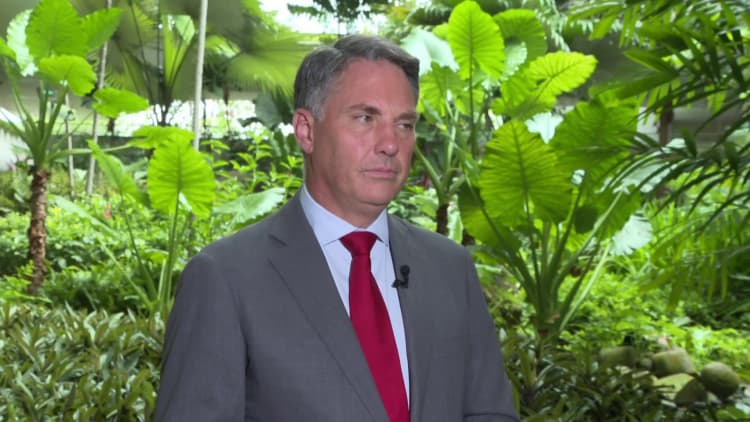
Australia’s defense minister told CNBC: “Our position on Taiwan is very clear. We don’t want to see any alteration to the status quo across the Taiwan Straits … that’s the position that we’ve been articulating.”
“We don’t think that conflict within the region is inevitable … We need to create pathways for peace and that’s what we will do,” Marles added.
Pistorius, Germany’s defense minister, added: “We still keep with our opinion and policy of ‘One China’ and that means at the same time, any change of the status quo is only acceptable if every party is agreeing with, and of course, [is] peaceful. So this is the line we are following — and we will follow in the future.”
Relations between Beijing and Washington hit a new low when U.S. House Speaker Nancy Pelosi, visited Taiwan in August despite China’s warnings to the U.S. to honor its commitment to the “One China” principle.

